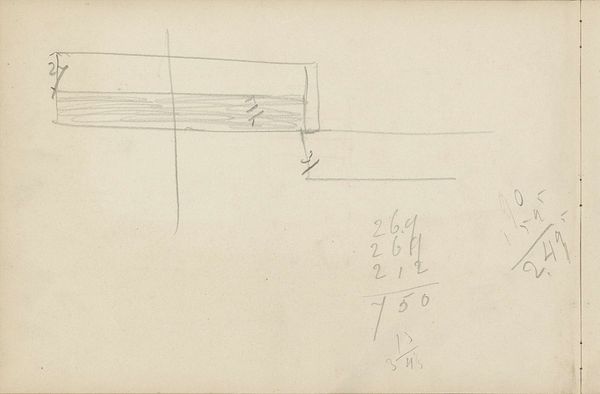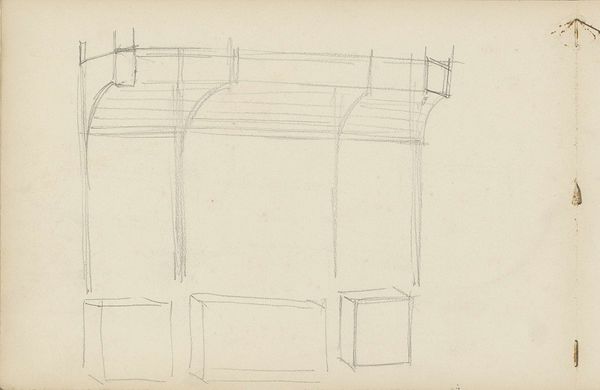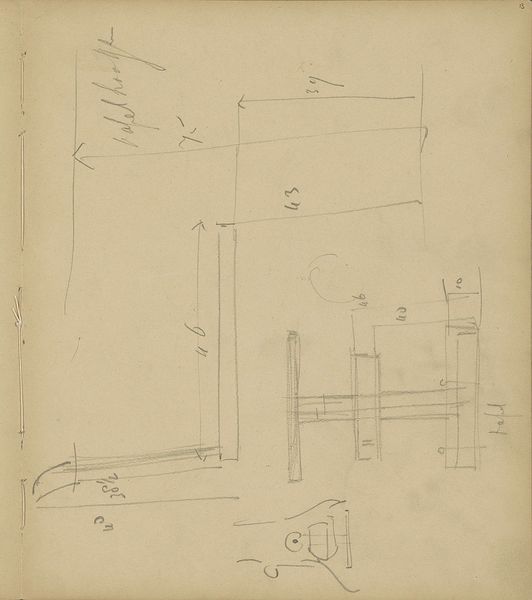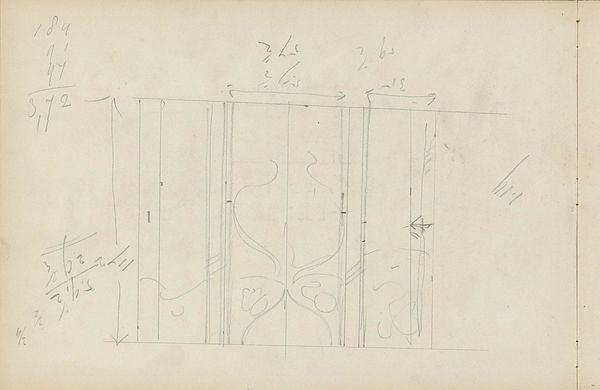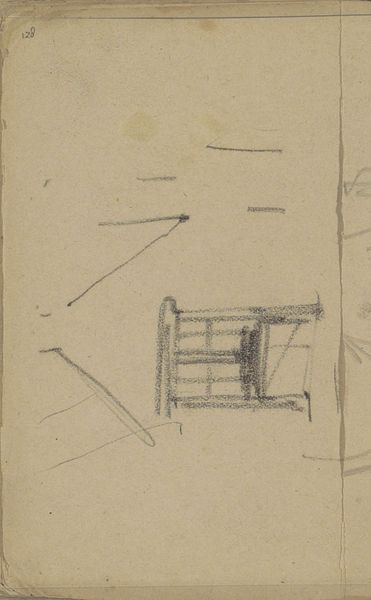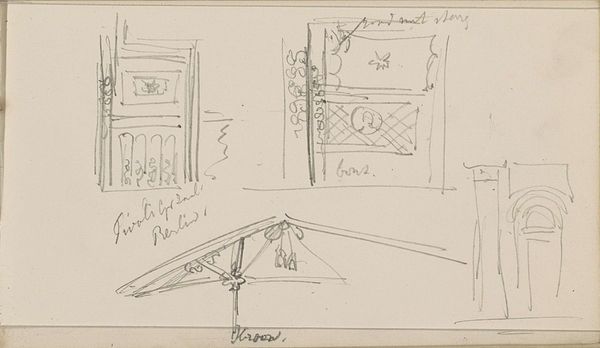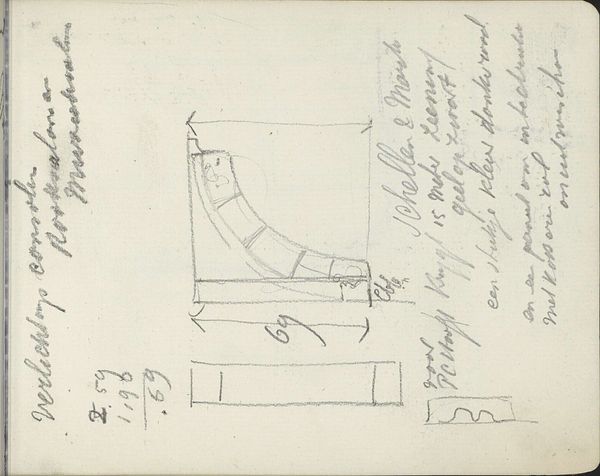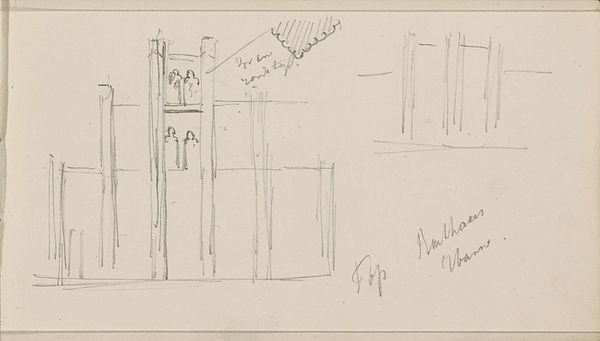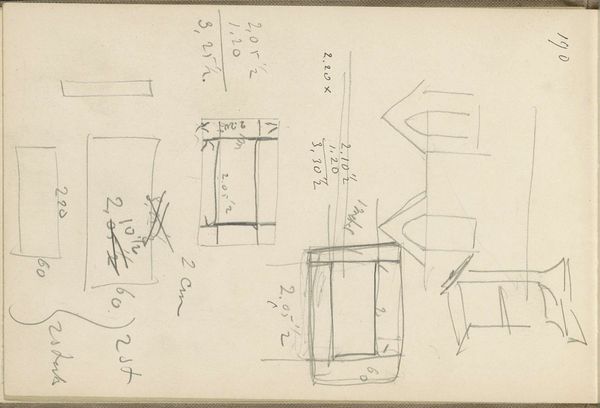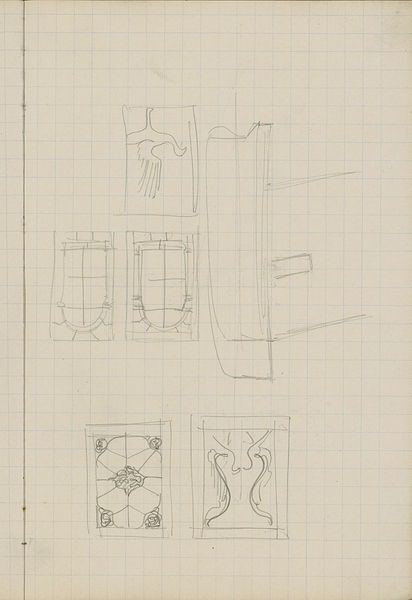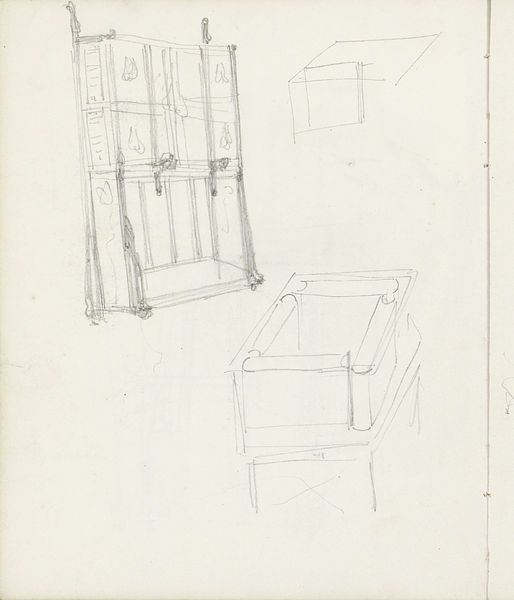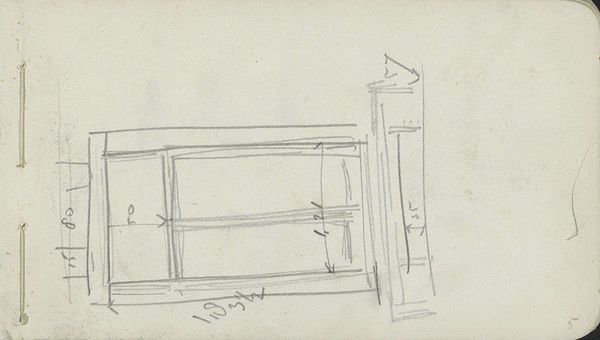
drawing, pencil
#
drawing
#
art-nouveau
#
sketch book
#
incomplete sketchy
#
hand drawn type
#
personal sketchbook
#
idea generation sketch
#
sketchwork
#
fading type
#
geometric
#
sketch
#
pencil
#
sketchbook drawing
#
sketchbook art
#
initial sketch
Copyright: Rijks Museum: Open Domain
Curator: I find myself immediately drawn to the tentative nature of the lines in this drawing. There's an uncertainty, a probing quality, which suggests we're witnessing the birth of an idea. Editor: That’s certainly apt. What we're looking at is "Portaal," a pencil drawing on paper by Carel Adolph Lion Cachet, likely dating from around 1905 or 1906, presently held at the Rijksmuseum. It embodies that Art Nouveau aesthetic so prominent at the turn of the century. Curator: Absolutely. The drawing is quite linear; it seems to depict some kind of architectural structure. My interest lies in its abstraction – the suggestion of depth and form without firm commitment. How interesting is the interplay of geometric shapes, those numerical annotations, they speak of design calculation but somehow resist resolving into a coherent form. Editor: Indeed, it almost looks like a page from an architect's or an engineer's personal sketchbook, one that emphasizes the functional geometry necessary for construction while blending it with an Art Nouveau desire for fluid ornamental beauty. I see the hints of decorative, stylized elements characteristic of that movement in what seems like the frame design for a building's entrance, but there is so much extra annotation on the page, almost to the point of scribbling. Curator: Precisely! The very essence of Art Nouveau lies in the unity of function and ornament. And yet, this piece exists in a liminal state—an idea not fully formed. The use of pencil on paper gives it an immediacy, an intimacy that is rather striking and it resists a pure interpretation of geometric functionality. What can you tell me about its presence at the Rijksmuseum? Is it prominently featured, perhaps indicating Lion Cachet’s significance as a designer of some note? Editor: Its inclusion highlights the institution’s dedication to contextualizing works like Cachet’s as both unique works in themselves and as exemplary historical sketches demonstrating popular forms and artistic applications. I suppose this invites viewers to ponder the boundaries between public presentation and the intimacy of a sketchbook. Cachet made his start designing for the Zwartwit printing company, which might reflect his experience visualizing typography and design principles. Curator: The incompleteness itself speaks volumes, doesn’t it? We are left to complete the image ourselves and ponder how many sketches like these preceded more realized projects. Editor: Exactly. It becomes less about the single drawing itself and more about this demonstration of how creative ideas gestate, circulate, and eventually concretize into structures that have had a large cultural and political presence. Curator: I find this exposure to formative moments really compelling and, on a structural level, quite satisfying.
Comments
No comments
Be the first to comment and join the conversation on the ultimate creative platform.
